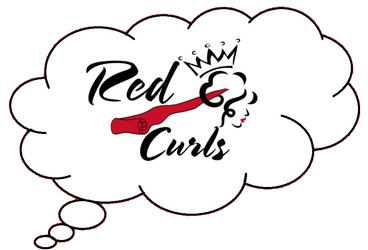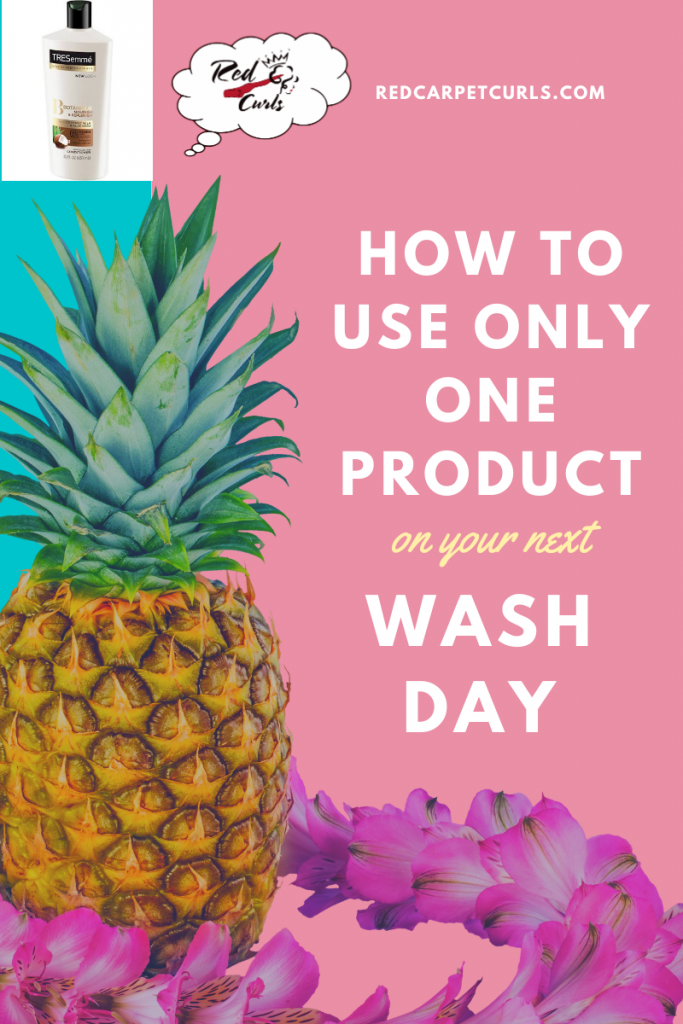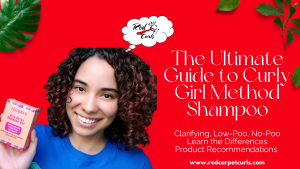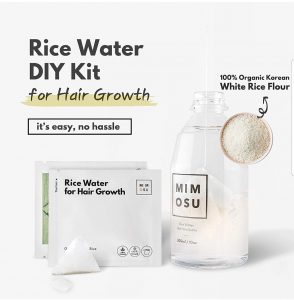Well Hello, Again My Beautiful #RedCarpetCurlsRoyalty,
Let’s be honest, washday at the beginning of your Curly Girl Method routine is exciting. We have brand new products and routines to try out, review, and share on our social media accounts. After a few weeks, months, or even years into the method, you will soon realize life isn’t the most considerate about giving you ample time to perform the ordeal that can be washday. That can lead to skipping washday all together, putting our hair up in a bun, and forgetting about it. The next thing you know, your hair is dry and brittle, getting weaker with each day and lord, the breakage and split ends. It’s just unacceptable!
I’ve been following the Curly Girl Method for a little over three years now (My three year curl anniversary is Feb 2020). Three years means A LOT of washdays, especially during the summers when you wash your hair more often dude to visiting the beaches and pools. That can also dry out your hair, so I figured out a shortcut for those busy days where time is just not an option. Get the moisture you need to make those curls pop all with one product, a rinse-out conditioner.
Now, hear me out, a rinse-out conditioner is a powerful weapon in your CGM arsenal and I am going to show you why in this article. For the sake of demonstrating this advice, I will be using Tresemme Botanique Nourish and Replenish Conditioner. You can find a 22-ounce bottle of this CGM approved, moisturizing conditioner for around $5 at your local Walmart and Target.
How Can I Use A Rinse-Out Conditioner As My Sole Product On Washday?

A rinse-out conditioner is one of the most versatile and underutilized products on the market. According to the International Journal of Trichology, the purpose of a conditioner is to decrease friction in the hair that can lead to tangles and frizz. When you decrease the friction in your hair (your hair strands rubbing against each other) you moisturize the hair, properly seal the cuticle, which results in less frizz and improved shine and manageability.
According to the Indian Journal of Dermatology, Conditioners were created as a solution and counterpart to shampoos. Shampoos with sulfates were created around the 1930s, soon people noticed sulfates were a bit too rough on the hair and removed too much moisture along with the build-up. Sebum is the natural oil our scalp produces, it is known as the ideal conditioner. The problem with naturally textured hair (all hair that is not straight) is that the pattern in our hair makes it difficult for the sebum to make its way from our scalp to the ends of our strands to properly moisturize them. As a result, we need a synthetic substance similar to sebum, that is where conditioners come in.
Conditioners are formulated with Cationic Surfactants, also found in gentle cleansing shampoos like Low-Poos and No-Poos. Cationic surfactants are able to mildly cleanse the hair (if there isn’t build-up present). Some conditioners also contain Non-Ionic Surfactants such as moisturizing alcohols not only gently cleanse the hair but moisturize it as well.
The formulation and the purposes of a conditioner make it the perfect product to use for every step of your wash day to make your washday quick and easy. The same conditioner has the power to gently cleanse, condition, and seal that moisture in your hair for healthier and shinier looking hair. Please remember conditioners build up and you must clarify your hair at least once a month for this type of washday shortcut to work.
How Does This All Work? What’s the Science Behind This ShortCut WashDay?

As I explained, naturally textured hair requires more moisture than straight hair because it doesn’t have enough sebum moisturizing it. This leads to dry hair, split ends, and breakage. Our hair strands, by nature, are negatively charged, and conditioners are positively charged. You know the old saying opposites attract.
Conditioners were created to act as synthetic sebum, which encourages the cuticle layer to seal, locking in the moisture. The positively charged conditioner molecules deposit into the negatively charged hair, essentially equalizing it. When a conditioner is deposited into the hair strands, it forms an invisible flexible film around the strands similar to silicones to lock in moisture and shine. The difference is when following the Curly Girl Method we do not utilize silicones in our conditioners. The conditioner deposits into every hair strand when properly distributed, but the most important thing to remember is the conditioner deposits most in the areas that contain the most weathering or damage (very similar to protein).
The Indian Journal of Dermatology describes rinse-out conditioners as, “Conditioning agents can be defined as additives which enhance feel, appearance, fullness, lubricity, reflectance, and general manageability of hair. Therefore, the need was felt for synthetic sebum like substance or a conditioner which was able to minimize static electricity, increase hair shine, volume and improve hair manageability and also to maintain hairstyling.”
Conditioners as we discussed earlier, are formulated with cationic, non-ionic, and/or Amphoteric detergents that work to gently cleanse the hair. If you do not have build-up in your hair this is gentle enough to give your scalp and hair a nice clean feeling without stripping your hair of all your moisture like most shampoos (even sulfate-free) tend to do overtime.
So, we have just established one rinse-out conditioner can take the place of three separate washday steps:
- Gentle Cleansing Shampoo – Conditioners contain gentle surfactants that have the ability to gently cleanse without stripping hair of moisture. This is not the only way you should cleanse, build-up occurs with co-washing and hair should be clarified at least once a month.
- Rinse-Out Conditioner– to moisturize the hair again, depending on the ingredients, it can contain ingredients like honey or aloe vera that penetrate to the deepest layers of your hair to ensure it is healthy to from the cuticle to the cortex.
- Leave-in Conditioner/Styler – Using a rinse-out conditioner as a leave-in work the same, just use smaller amounts since the formula is heavier. It does not provide much hold, so you might need a gel for hold. If you are just staying around the house or running errands its a perfect one and done situation. When I use a rinse-out conditioner as a styler my curls last the day, It just will not last (definition wise) for day 2, so be prepared to refresh!
Can You Use A Rinse Out Conditioner To Replace A Deep Conditioner?
While you can use a rinse-out conditioner to give you instant moisture in the long term it is not a good idea to skip the fundamental step of Deep Conditioning. I would not suggest replacing your weekly deep conditioner with a rinse-out conditioner. Here’s why, as explained in the Indian Journal of Dermatology…
“Deep conditioners, also known as intensive hair conditioners, are similar to rinse-out conditioners, except they are more concentrated and are left on the hair for 20 to 30 minutes. They are usually used for extremely dry hair and also before chemical treatment such as coloring and waving. If they are used prior to chemical hair processing, they are known as “Fillers.”
This treatment is formulated to be heavier and more effective at penetrating the deepest layers of your hair to repair it. A deep conditioner is what consistently improves the health of your hair.
A rinse-out conditioner, also known as Instant Conditioners, “are applied immediately after shampooing and are left for a short period of time (around 5 min) before rinsing. They are ideal for daily use with minimally damaged hair. They are the most popular type of conditioner for both salon and home use.”
A rinse-out conditioner focuses on the cuticle (outermost layer) of the hair. A conditioner seals the scales shut to increase shine. Conditioners can contain specific ingredients to penetrate the cortex but it is not the main purpose.
So in simpler terms:
- Use a Rinse-Out Conditioner – for light moisture and focusing on sealing the cuticle
- Use a Deep Conditioner – to consistently improve the health of your hair since it contains multiple ingredients designed to heal the hair to the deepest layers instead of just the cuticle.
To learn more about the differences between deep conditioners and rinse-out conditioner science, including tips, check out our Science Behind Deep Conditioning article or YouTube Tutorial.
Now, If you consistently deep condition, then skipping one here and there will not hurt the rinse-out conditioner will work just fine as a shortcut. You can even mix in some amino acids or neutral protein filler to kick up the benefits of your rinse-out conditioner.
What Should You Do If You Need To Clarify But Want To Keep It Simple?
Honestly, this routine is so simple. The idea of just using one product is so seductive, especially as life gets more chaotic.
If you want to keep it simple, my best suggestion would be to just add one extra step to this routine, an apple cider vinegar rinse or a lemon rinse.

Personally, I prefer ACV since the mother contains so many other minerals and vitamins that are great for our hair and scalp. There are many ways to do an apple cider vinegar rinse. Here is a YouTube tutorial on how I do mine. Normally, I use a gentle cleansing shampoo first, which as we discovered, contains the same types of surfactants as a conditioner. So, the way to add this simple step is…
- Co-Wash with the conditioner first, try using a scalp brush for a deeper clean
- Apply your apple cider vinegar rinse, leave on for 3-5 minutes before rinsing out with warm water
- Use your conditioner as a regular rinse-out conditioner, rinse that out after 3-5 minutes
- Use the conditioner as your styler
Queen Monroe’s One Product Wash Day

My favorite product to use for my one product washday is the Tresemme Botanique Nourish & Replenish Conditioner with Coconut Milk and Aloe Vera. You can normally find this in your local Walmart and Target stores for around $5 a bottle, not a bad deal considering the bottle is 22 fl oz.
This conditioner is thick, moisturizing, and has a lovely fragrance. It doesn’t leave a heavy feeling in my hair once it’s dry. My hair doesn’t encounter much build-up since I make sure to include my ACV Rinses. But the real reason this conditioner is my favorite, besides being super easy to find in stores and being inexpensive, is the ingredients!
The first five ingredients make up roughly 80% of a product’s formulation. I learned that from Cosmetic Chemist and Founder of Inashi Naturals products, Rhonda Marshall. Many products on shelves showcase a particular ingredient in a formulation like aloe vera, or fragrances, when you look at product labels, most of the time, those ingredients are the last few meaning it makes up less than 2% of the actual product! Talk about misleading!

The first five ingredients of the Tresemme Botanique Nourish & Replenish Conditioner are:
- Water – every product should have water or aloe vera as the first ingredient because those are the two best moisturizers for hair.
- Cetearyl Alcohol – fatty acid, also known as moisturizing alcohol, it’s good for your hair, in a conditioner, this ingredient works as an emulsifier to help keep the thick formula consistency. Cetearyl’s long-chain structure is rich in carbon which gives it extra lubricating and moisturizing abilities. It also is film-forming creating that indivisible flexible barrier. And finally, many long-chain alcohols exhibit some surfactant properties meaning it has the ability to gently cleanse the hair.
- Stearamidopropyl Dimethylamine – cationic surfactant, this is considered the backbone of the conditioner. This ingredient has the ability to gently cleanse your hair, it is not strong enough to clarify build-up. This ingredient binds to the hair, also creating the invisible film to help reduce the hair’s negative charge. This helps reduce frizz and improve shine and manageability.
- Coconut Oil – one of the only oils small enough on a molecular level to penetrate the hair to the deepest layer (known as the cortex) of the hair to soften it from within. Coconut oil does not have the ability to moisturize hair but it can soften it and improve elasticity and shine. Oil also works to seal moisture into the hair for longer periods of time.
- Aloe Vera Juice– aloe vera juice is the best moisturizer for skin and hair beside water. It can absorb into human skin up to 4x faster than water. Aloe penetrates to the deepest layers of the hair to moisturize your hair effectively, as well, aloe vera is a natural sealant meaning once it moisturizes the cortex it will seal the scales on the cuticle to ensure a beautiful shine and the moisture will remain in your hair for longer periods of time.
With this one conditioner and these five ingredients alone, I know this product, when used correctly has the ability to:
- Co-wash my hair
- Condition my hair
- Style my hair
- On rare occasions replace my deep conditioner
With these five ingredients, I know this product has the ability to gently cleanse, condition, and style. What more could I possibly ask for in a conditioner?

Who said the Curly Girl Method had to be super complicated and overwhelming?
Have any more questions for me? Comment them below or send them to [email protected]




